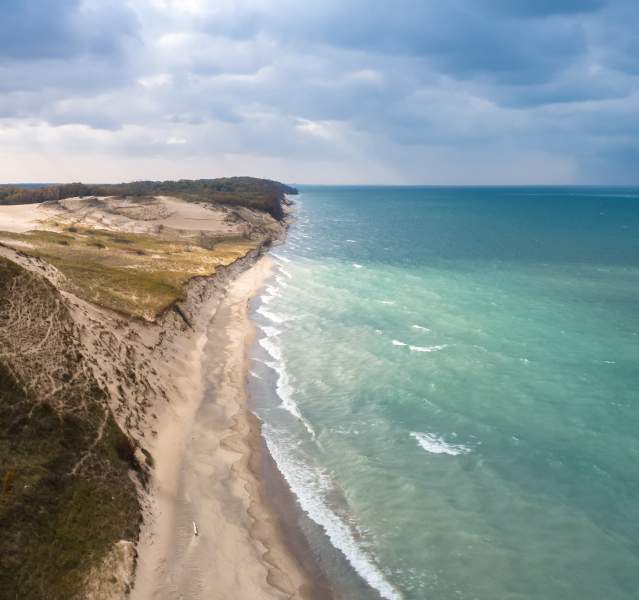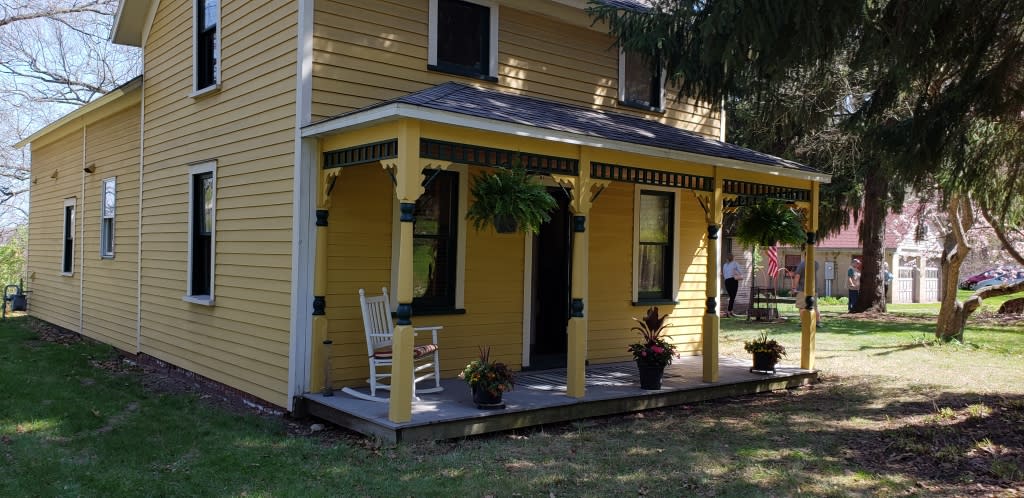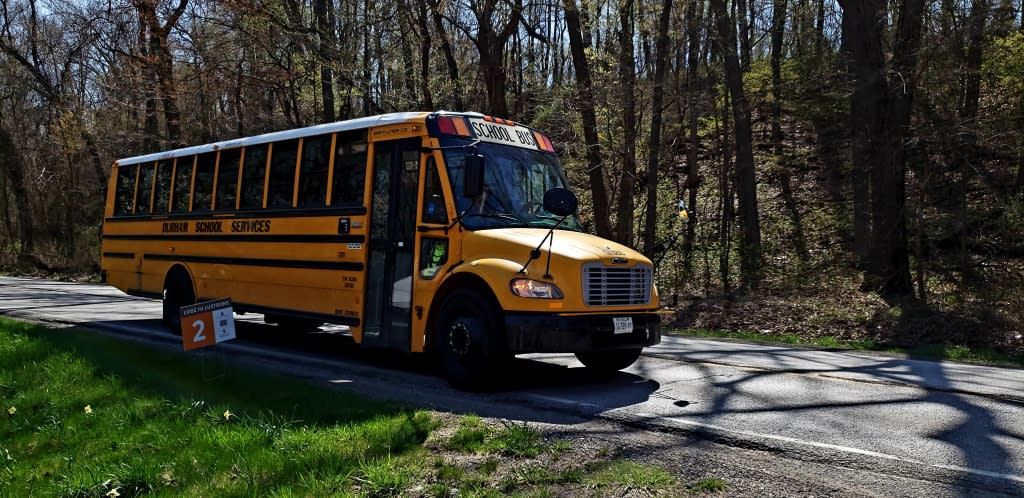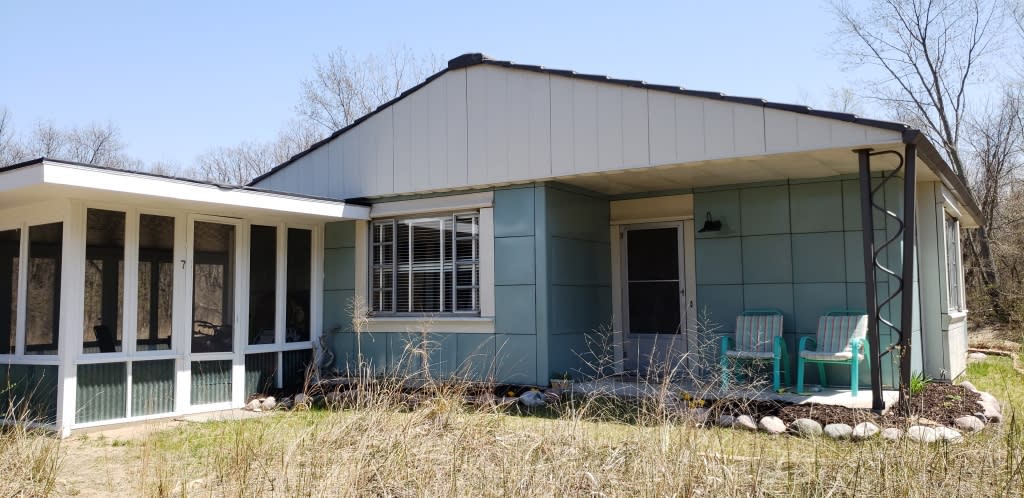The 2018 Logs to Lustrons Tour by Indiana Landmarks marked my first expedition across Indiana Dunes Country since I moved here in January. The Indiana Dunes area is known for the Century of Progress homes built along the Lake Michigan coast in 1933 after the Chicago World’s Fair. You definitely can’t miss the brightest of them, the pink “Flamingo” house, as your cruise along the beach between Porter and Beverly Shores. Beyond this iconic site, I had no idea just how much was waiting to be discovered at the Indiana Dunes.
In partnership with the National Park Service, Indiana Landmarks leases many properties along the Logs to Lustrons Tour to individuals who live in and restore historic homes. According to Indiana Landmarks, “the sites [need] considerable renovation to make them habitable,” a challenge many tenants are willing to face to preserve their piece of Indiana Dunes history. During the tour, these long-term residents opened their homes to discuss their efforts to preserve these beautiful sites.
The tour began at the Indiana Dunes Visitor Center, where a caravan of school buses waited to take my group back into the first era of architectural design: Swedish log cabins.
As a National Park Service step-on guide explained during our short bus trip to the first set of sites, large groups of Swedish immigrants settled in Northwest Indiana during the mid-1800s. The largest of these Swedish groups established the Gust Lindstrom site in Baillytown around this time. They built their typical log cabin style homes by stripping the bark off native rot-resistant woods like oak and cherry. Carving grooves at the ends of the logs allowed them to stack the logs into high walls—exactly like Lincoln Logs!
The Oscar and Irene Nelson House was another delight of Swedish design. Sheltered in a private grove of newly flowering trees, the Nelson House looks like an illustration straight out of Little House in the Big Woods. The stunning little cabin has been through a makeover since its construction in 1908, but the current tenants have worked hard to preserve as much of the original structure as possible—including the original living room walls, whose exposed wood panels remain completely intact to this day.
I hopped back on the bus and jumped straight into the 20th century. This was the dawn of Northwest Indiana’s steel industry, which is still one of the most prevalent trades in our area. Just outside the Indiana Dunes National Park, the Goodfellow Lodge Youth Camp remains the focal point on this 63-acre plot. Built to last, the rectangular lodge has two sturdy limestone chimneys and thick wood walls. Children of U.S. Steel employees attended the camp while their working parents were away. The kids were given unique recreational opportunities at the camp, which ran from 1941 until 1976.
One such opportunity was an innovative new swimming pool, made entirely of steel! The tour volunteer explained this with a strange smile, and I quickly understood why. Camp coordinators realized the danger of this high-end recreation and posted scouts to remove campers from the pool at even the slightest hint of thunder. Nevertheless, the lodge and surrounding campgrounds are a testament to the Indiana Dunes mid-century industrial development.
The tour rounded off with the International-style craze cultivated by the 1933 Century of Progress exhibition at the Chicago World’s Fair. International-style structures are easily recognized by their straight-edge, boxy frames. Even 85 years later, it’s easy to see the allure of these open-concept homes. The Solomon family built their own private getaway, the Solomon Enclave, in 1948 using classic International style. The enclave contains three individual living spaces, built side-by-side and connected by a wooden walkway. Their flat-topped roofs, wide windows, and broad balconies contribute to a perfect beach-viewing environment, which is just what the Solomon family needed for their summer vista!
There were rumors during the tour that the Solomon Enclave may be restored to meet the needs of beach-front vacationers. I was unable to pin down a timeline for this project, but keep your eyes on the newsfeed! It's a perfect location for a long family weekend. Once the site is habitable, I doubt it will be long before it's fully booked.
At the end of our tour trail, just one driveway down from the Solomon Enclave, sits the Jacob Lustron. This was my favorite site on the tour, and not just because the house is my very favorite shade of blue. I was fortunate to steal a few moments with one of the owners, who told me the story of their truly unique home.
The mass-production of Lustrons, or prefabricated steel homes, was a direct result of post-war urban crowding. As veterans returned home at the end of World War II, President Truman sought to find a permanent solution to the housing shortage. In 1950, the Blum family assembled one of these prefabricated homes, now called the Jacob Lustron, directly into the side of a sand dune overlooking Lake Michigan. Over the years, erosion made the site unlivable—but thanks to its easy-build framing, the house was remarkably disassembled and moved to its current location near the Solomon Enclave. The Snells are the current tenants and also the family responsible for rebuilding the house on its new nesting ground. According to the tenants’ son, Will, they accomplished the lustron-rebuild with “a wrench, a screwdriver, and a lot of elbow grease.”
Want to discover even more Indiana Dunes history? Follow Indiana Dunes on Facebook to hear when the next history tour is scheduled!








